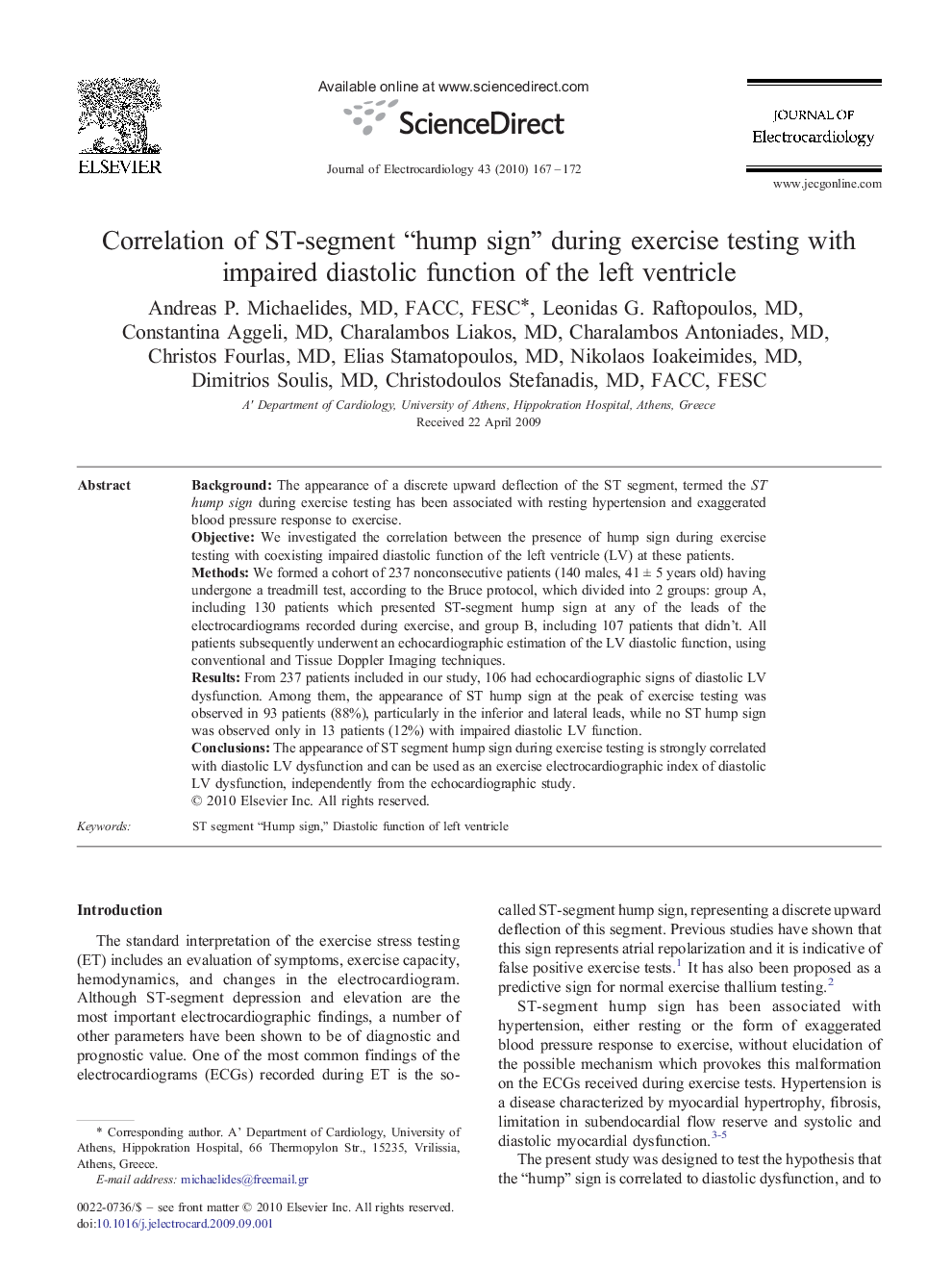| کد مقاله | کد نشریه | سال انتشار | مقاله انگلیسی | نسخه تمام متن |
|---|---|---|---|---|
| 2968726 | 1178886 | 2010 | 6 صفحه PDF | دانلود رایگان |

BackgroundThe appearance of a discrete upward deflection of the ST segment, termed the ST hump sign during exercise testing has been associated with resting hypertension and exaggerated blood pressure response to exercise.ObjectiveWe investigated the correlation between the presence of hump sign during exercise testing with coexisting impaired diastolic function of the left ventricle (LV) at these patients.MethodsWe formed a cohort of 237 nonconsecutive patients (140 males, 41 ± 5 years old) having undergone a treadmill test, according to the Bruce protocol, which divided into 2 groups: group A, including 130 patients which presented ST-segment hump sign at any of the leads of the electrocardiograms recorded during exercise, and group B, including 107 patients that didn't. All patients subsequently underwent an echocardiographic estimation of the LV diastolic function, using conventional and Tissue Doppler Imaging techniques.ResultsFrom 237 patients included in our study, 106 had echocardiographic signs of diastolic LV dysfunction. Among them, the appearance of ST hump sign at the peak of exercise testing was observed in 93 patients (88%), particularly in the inferior and lateral leads, while no ST hump sign was observed only in 13 patients (12%) with impaired diastolic LV function.ConclusionsThe appearance of ST segment hump sign during exercise testing is strongly correlated with diastolic LV dysfunction and can be used as an exercise electrocardiographic index of diastolic LV dysfunction, independently from the echocardiographic study.
Journal: Journal of Electrocardiology - Volume 43, Issue 2, March–April 2010, Pages 167–172